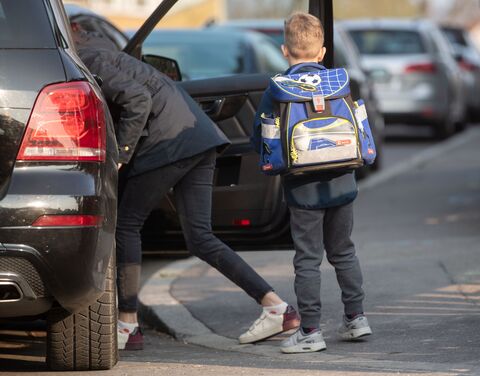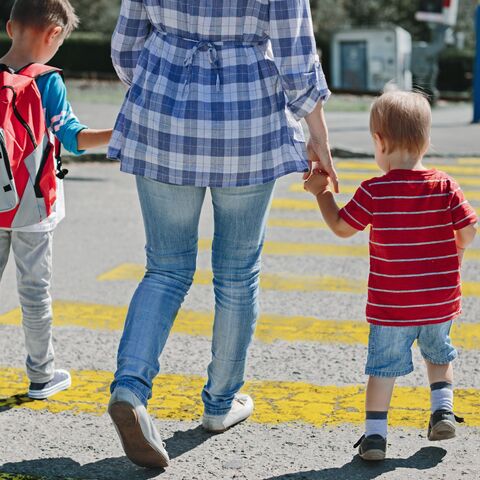
Parents driving kids to school – good or bad?
Nearly one third of parents are very worried about their children walking to school. This is why almost 30 percent of respondents drive their kids to school at least once a week. But even if this give parents some semblance of security, the main problem is that it also creates new risks.
A survey by AXA of 1,000 mothers and fathers in Switzerland in 2023 revealed that the start of the school year is cause for elevated parental anxieties. Thirty one percent of parents are almost always or often worried about their kids walking to and from school. And this number jumps to 40 percent for parents of young children between the ages of four and seven. According to Cyrill Haupt from the AXA Mobility Competence Center, this is understandable. “The cognitive abilities of children aren’t yet as fully developed as those of adults. Children are less observant and misjudge situations. One example of this is that children can't gauge how fast a car is traveling or whether it has enough time to stop.”
Is walking to school dangerous in Switzerland?
The study shows that walking to school in the French-speaking part of Switzerland is considered to be significantly riskier than in the German-speaking part (34 percent compared with 43 percent who gauge the trip to school to be somewhat dangerous, dangerous or even very dangerous). And parents in the French-speaking part are more worried about their children walking to school than those in the German-speaking part.
How often do parents taxi their kids to school?
It is likely due to these elevated concerns that parents in the French-speaking part drive their children to school much more often than parents in the German-speaking part. Over one third of parents in French-speaking Switzerland drive their kids to school every day or several times a week, while in German-speaking Switzerland it’s only ten percent. In both parts, 27 percent of parents drive their children to school or pick them up at least once a week.
Why do parents drive their kids to school?
There are practical reasons, such as school is on their way to work (29 percent). But here too, parental anxiety comes into play: 17 percent state that they feel it’s safer to drive their children to school. Eleven percent say they drive because they feel the walk to school is not safe.
But is it safe for parents to drive?
Even if parents feel it’s safer, they are creating a new danger for children who walk. “Parents who drive create even more traffic – especially in front of schools. And because space is limited and visibility is low, this constantly creates critical situations. Not least because parents are often in a hurry,” explains Cyrill Haupt. Luckily, a lot of parents seem to be aware of this. Over one third feel that parents who drive pose a threat to other children.
Has it become more dangerous for kids to walk to school?
Almost half of the parents surveyed feel that is has become more dangerous for kids to walk to school over the past twenty years, even though the number of accidents involving children has actually dropped significantly during this time. Parents likely feel this way due to the increased amount of traffic, for example. Things like streets without sidewalks, major roads (both mentioned by 54 percent of parents) and general peak times (47 percent) are considered to be particularly risky for smaller children. And trucks, larger vehicles like SUVs, EVs and electric scooters were also viewed as dangerous for younger children.
Despite these fears, “It is important for children to learn to walk to and from school all by themselves. This is part of learning how to deal with street traffic and it promotes independence among children,” concludes Cyrill Haupt.





